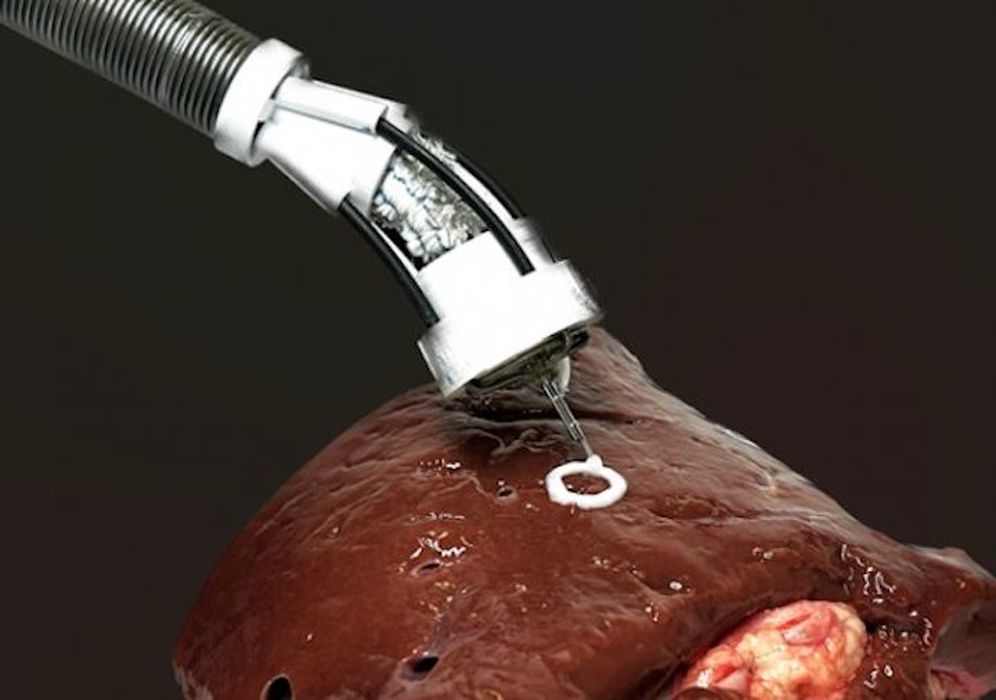
An important development in bioprinting was achieved by researchers at the University of New South Wales.
They’ve been able to create a unique 3D printing mechanism that can operate within the human body.
The “F3DB” apparatus resembles a robotic arm with a tiny bioprinting toolhead, which is inserted into the body. Once inside, a variety of surgical bioprinting operations can take place.
This video shows some of the possible movements with the new mechanism:
Why is this important?
Up to now, all bioprinting has taken out outside the body. Bioprinting usually requires specialized equipment and environments suitable for maintaining the living cells that were printed.
The typical sequence would be as follows:
- Bioprint a scaffold and deposit living cells on it
- Keep the bioprint in a nutrient medium to allow cells to live and grow
- The cells grow and eventually take on the geometry of the scaffold
- The scaffold dissolves over time, leaving just the cells in the desired shape
- The bioprint is then surgically placed into the patient
Note that all of these steps, aside from the final one, take place outside the body. Now, that’s changed.
The body is a suitable environment for living cells, it turns out, so if one could bioprint inside, several of the steps are eliminated.
There are many constraints, however, and applications will almost certainly be limited.
The device is multifunctional, and can provide other services, including cutting or washing. This provides a surgeon with a variety of tools to use during a procedure.
UNSW’s Dr. Thanh Nho Do explained:
“Existing 3D bioprinting techniques require biomaterials to be made outside the body and implanting that into a person would usually require large open-field open surgery which increases infection risks.
Our flexible 3D bioprinter means biomaterials can be directly delivered into the target tissue or organs with a minimally invasive approach. This system offers the potential for the precise reconstruction of three-dimensional wounds inside the body, such as gastric wall injuries or damage and disease inside the colon.”
The device can also overcome the issue of geometry mismatch between externally produced bioprints and actual tissue, as measurements of loose tissue are often imprecise.
The F3DB system offers new capabilities that, while promising, certainly invite exploration by surgeons facing difficult situations.
Via MedicalExpress
